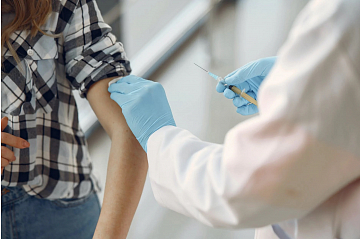ASU programmers are developing a computer model of vaccination against chickenpox

In Altai Krai, the possibility of including vaccinations against chicken pox in the Regional vaccination calendar is being discussed. To do this, scientists need to figure out which vaccination schedule will be most effective. This is exactly what the programmers of IMIT of AltSU deal with. An economic assessment of vaccination, carried out jointly with scientists from ASMU, showed that by vaccinating of 60 percent or more of the child population, the region will incur less losses than when paying for hospital parents of sick children.
To date, in Altai Krai, vaccination against chickenpox is carried out only on a paid basis. Inclusion of vaccinations in the regional calendar will make them available to everyone. There are several vaccination schemes, the task of scientists is to determine which one will be most effective. Employees of the Institute of Mathematics and Information Technology have created a computer model that will help to understand how each option (lack of vaccination, its different schemes) will affect the incidence rate. At present, the model is undergoing the procedure for obtaining a certificate of registration of the program for this model.
“The value of our program is that it can be modified for other diseases. This is a kind of basis, which we hope to extend not only to chicken pox, but also to other nosologies. Our project is aimed at the digital transformation of universities, primarily medical and pharmaceutical specialties. Our colleagues from ASMU are interested in such models being introduced into education in order to teach future epidemiologists how to predict the development of epidemics. AltSU also provides chemical-pharmaceutical and medical-biological education, and our university also has direction 03.03.02 Physics with the profile “Medical Physics”, perhaps such software products would also be interesting for them,” said Denis Kozlov, project manager.
The staff of the department is collaborating with ASMU on another project. This is a service that determines the likelihood of nosocomial infections. According to the WHO definition, these are any clinically expressed diseases of microbial origin that affect the patient during his hospitalization or visit to a medical institution for the purpose of treatment, or after discharge from the hospital (for example, wound infection). The service, developed by programmers together with mathematicians, includes a questionnaire that the doctor fills out based on the results of the patient's examination. Based on the results of this survey and mathematical relationships, the probability of a particular person having a nosocomial infection is calculated. Scientists plan to finalize this service and prepare it for implementation in practice.